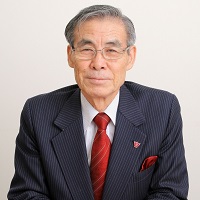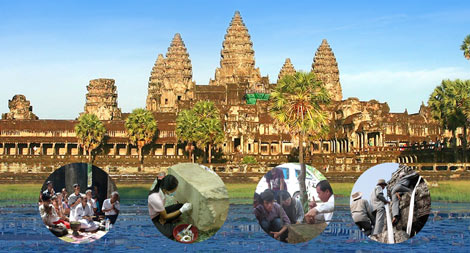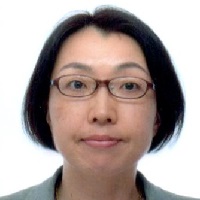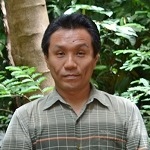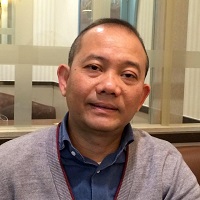講師・スタッフ紹介
石澤 良昭
上智大学アジア人材養成研究センター特任所長、上智大学客員教授、上智大学アンコール遺跡国際調査団団長、外務省・文部科学省共管機構「文化遺産国際協力コンソーシアム」会長。
専門は東南アジア史(特にアンコール王朝時代の碑刻学)。
上智大学外国語学部フランス語学科卒業。文学博士。聖マリアンナ医科大学助教授、鹿児島大学教授等を経て、1982年より上智大学教授。2005年2011年まで上智大学学長。1991年外務大臣表彰受賞、1998年カンボジア王国シアヌーク国王陛下よりサハメトリ章親授、2003年国際交流基金賞受賞。
主な著書、論文:2005『アンコール・ワットを読む』編著 連合出版。『アンコール・王たちの物語』NHK出版。 2009『東南アジア多文明世界の発見』講談社。『アンコール・ワットへの道』JTBパブリッシング。2013『新・古代カンボジア史研究』風響社。2014『カンボジア―密林の五大遺跡』三輪 悟と共著、連合出版。
丸井 雅子
上智大学総合グローバル学部・教授。
専門は東南アジア考古学、文化遺産研究、地域研究(カンボジア)。
1995年から1997年まで文部省アジア諸国派遣等留学生としてプノンペン大学に所属。その後シエムレアプの上智大学研修センター(現 アジア人材養成研究センター)にて考古学研修指導にあたる傍ら、文化遺産教育活動や口頭伝承採集調査に取り組み2003年まで滞在。2001年上智大学大学院外国語学研究科地域研究専攻満期退学。嘱託講師等を経て2007年より現職。
主な著書、論文:2010『グローバル/ローカル:文化遺産』石澤良昭と共編著 上智大学出版。2014「世界の中の日本人考古学者-東南アジアのフィールドから-」『考古学研究』考古学研究会。2015「カンボジアの戦争遺跡とその活用」『季刊考古学・別冊23 アジアの戦争遺跡と活用』雄山閣。
三輪 悟
上智大学アジア人材養成研究センター・研究員。アジア文化研究所・共同研究所員。
専門は東南アジアの文化遺産建築の保存修復と活用に関する研究(カンボジア)。
1997年より上智大学アンコール遺跡国際調査団に参加しアンコール・ワット西参道の建築調査を担当。1999年日本大学理工学研究科修士課程修了。同年よりカンボジア駐在を始める。現在、アジア人材養成研究センター(本部、カンボジア)のフィールド所長。
主な著書、論文:2014『カンボジア 密林の五大遺跡』石澤良昭と共著 連合出版。2011『アンコール・ワット西参道修復工事 第一フェーズ 完成報告書』石澤良昭と共著 上智大学アジア人材養成研究センター。2009「インド古代建築文化遺産調査報告」pp.109-159『カンボジアの文化復興(24)』石澤良昭と共著 上智大学アジア人材養成研究センター。
ニム ソティーヴン
上智大学アジア文化研究所・客員研究所員。
専門はカンボジア歴史学。
1996年カンボジア王立芸術大学考古学卒業。その後、シエムレアプの上智大学アンコール遺跡国際調査団(現アジア人材養成研究センター)にて考古学研究員として勤務。2000年から国費留学生として上智大学大学院外国語学研究科地域研究専攻に留学。2014年から上智大学非常勤講師。アジア人材養成研究センターが実施している考古学研修や文化遺産教育活動では、指導者の一人として参加。
主な著書、論文:2005“Reconstruction of Cambodian History in the Middle Period: Approach through the Indigenous Traditional Writings”『アンコール遺跡を科学する』上智大学アジア人材養成研究センター、pp. 11-27. 2006 “Cultural Heritage Conservation: Altering of Buddhist Temple Structure in Angkor”, Sophia AGLOS, Working Papers Series, No. 11, pp. 73-82. 2013 The Successive Change of Location of the Khmer Capital from the 15th to 17th century,上智大学学位請求論文(博士・地域研究)。2013「上智大学の活動と文化遺産教育」『アンコール遺跡を科学する』上智大学アジア人材養成センター、pp.25-50。
久保 真紀子
日本学術振興会特別研究員PD(日本大学)。
専門はカンボジア美術史、クメール建築の装飾研究。
2005年以降、上智大学大学院にてクメール寺院建築の装飾に関する調査研究を行い、2013年同大学に博士論文を提出。その後2012年11月から2015年2月までの約2年4か月、みずほ国際交流奨学財団の奨学生としてカンボジア・シエムレアプに留学(所属先はアンコール保存事務所)。留学中は遺跡調査と並行して、カンボジア王立芸術大学考古学部においてクメール美術史の特別講義(全4回)を担当。帰国後、上智大学アジア人材養成研究センターでの勤務を経て、2016年4月から現職。2015年から多摩美術大学非常勤講師。
主な著書、論文:2012「アンコールのプレア・カーンにおける図像表現とその配置構成 -出入口に施された装飾を中心に-」上智大学学位請求論文(博士・地域研究)。2014「プレア・カーンのリンテルにおける仏教三尊形式の表現に関する一試論」『新田栄治先生退職記念東南アジア考古学論集』新田栄治先生退職記念論集編集委員会。2014「アンコールのプレア・カーン寺院における尊像配置とその意味 -出入口の浮彫図像と碑文の比較を通して-」『佛教藝術』337号 毎日新聞社。2015『タ・ソムの出入口に施された図像表現とその配置構成 -プレア・カン及びジャヤタターカ周辺の寺院群に関する調査報告-』Monograph Series 上智大学アジア文化研究所。2015「禅定印仏坐像の表現と配置構成 -アンコールのプレア・カンの出入口に施された浮彫装飾を中心に-」『東南アジア -歴史と文化-』44号 東南アジア学会。
Bio of Lecturers and Staff
Yoshiaki ISHIZAWA
Director of the Sophia Asia Center for Research and Human Development (By Special Appointment), Visiting professor, Chief of the Sophia Angkor International Mission, and President of the Japan Consortium for International Cooperation in Cultural Heritage, an organization under joint management of the Japanese Ministry of Foreign Affairs and the Ministry of Education, Culture, Sports, Science and Technology (MEXT).
Specializes in history of Southeast Asia, with expertise in epigraphy during the period of the Angkor Dynasty.
Ishizawa obtained a Bachelor's degree in French Language and Studies from the Faculty of Foreign Studies, Sophia University. His former appointments include Associate Professor, St. Marianna University School of Medicine, and Professor, Kagoshima University. Since 1982, he has been Professor of Sophia University. He is the former President of Sophia University (2005-11). He has received a number of distinguished awards including the Foreign Minister's Commendation in 1991, the Royal Order of Sahametrei by King Sihanouk, Kingdom of Cambodia in 1998, and the Japan Foundation Award in 2003.
Books and papers: Author/editor of “アンコール・ワットを読む” (Rengo Shuppan 2005). “アンコール・王たちの物語” (NHK Publishing), “東南アジア多文明世界の発見 (The Discovery of a World of Myriad Civilizations in Southeast Asia)” (Kodansha 2009). “アンコール・ワットへの道” (JTB Publishing). “<新>古代カンボジア史研究” (Fukyosha Publishing 2013). Co-author with Satoru MIWA “カンボジア 密林の五大遺跡” (Rengo Shuppan 2014).
Masako MARUI
Professor in the Faculty of Global Studies, Sophia University.
Specializes in Southeast Asian archaeology, study of cultural heritage, and area studies (Cambodia).
Marui was at the Royal University of Phnom Penh as a student on the MEXT scholarship program to study in Asian countries from 1995-97. She then joined the Sophia University Training Center (the current Asia Center for Research and Human Development) in Siem Reap to study and to provide training in archaeology while working on education in cultural heritage as well as collecting oral traditions until 2003. She withdrew from the area studies program of the Graduate School of Foreign Studies, Sophia University in 2001, after completion of the required course credits. Having held various positions including part-time lecturer, she was appointed to her current position in 2007.
Books and papers: Co-author/co-editor with Yoshiaki ISHIZAWA “グローバル/ローカル:文化遺産 (Global/Local: Cultural Heritage)” (Sophia University Press 2010). “世界の中の日本人考古学者-東南アジアのフィールドから-” in “考古学研究 (Archaeological Studies)” (Society of Archaeological Studies 2014), and “カンボジアの戦争遺跡とその活用” in “季刊考古学・別冊23 アジアの戦争遺跡と活用” (Yuzankaku 2015).
Satoru MIWA
Research Fellow of the Sophia Asia Center for Research and Human Development. Collaborative Fellow of the Sophia University Institute of Asian Cultures.
Specializes in studies of conservation, restoration, and application of architecture of cultural heritage in Southeast Asia (Cambodia).
In 1997, Mr. Miwa began architectural research on the West Bridge of Angkor Wat as a member of the Sophia University Angkor International Mission. Since completing the Master program, College of Science and Technology, Nihon University, he has been based in Cambodia. He currently serves as Field Director of the Sophia Asia Center for Research and Human Development (headquarters in Cambodia).
Books and papers: Co-author/co-editor with Yoshiaki ISHIZAWA “カンボジア 密林の五大遺跡” (Rengo Shuppan 2014). Co-author with Yoshiaki ISHIZAWA “アンコール・ワット西参道修復工事 第一フェーズ 完成報告書 (Sophia Asia Center for Research and Human Development 2011). Co-author with Yoshiaki ISHIZAWA “インド古代建築文化遺産調査報告”, pp. 109-159 in “カンボジアの文化復興(24)” (Sophia Asia Center for Research and Human Development 2009).
Sotheavin NHIM
Visiting Fellow of the Sophia University Institute of Asian Cultures.
Specializes in Cambodian history.
Nhim graduated the Faculty of Archaeology, Royal University of Fine Arts in Cambodia in 1996. He then joined the Sophia Angkor International Mission (the current Asia Center for Research and Human Development) in Siem Reap, as an archaeological research fellow. In 2000, he began to study on a government scholarship in the area studies program of the Graduate School of Foreign Studies, Sophia University. Since 2014, he has been a part-time instructor, Sophia University. He works with the Asia Center for Research and Human Development as an instructor in their archaeological training and educational program on cultural heritage.
Books and papers: “Reconstruction of Cambodian History in the Middle Period: Approach through the Indigenous Traditional Writings,” pp. 11-27 in “アンコール遺跡を科学する (Investigation of the Angkor Monuments)” (Asia Center for Research and Human Development 2005). “Cultural Heritage Preservation: Altering of Buddhist Temple Structure in Angkor,” Sophia AGLOS, Working Papers Series, No. 11, pp. 73-82 (2006). “The Successive Change of Location of the Khmer Capital from the 15th to 17th century,” Dissertation, Sophia University (Doctoral program in area studies, 2013). “上智大学の活動と文化遺産教育” pp.25-50 in “アンコール遺跡を科学する (Investigation of the Angkor Monuments)” (Asia Center for Research and Human Development 2013).
Makiko KUBO
Research Fellow (PD) of the Japan Society for the Promotion of Science (Nihon University).
Specializes in Cambodian art history, with expertise in architectural ornament of Khmer architecture.
In 2005, Kubo began her research in architectural ornament of Khmer temples at the Graduate School of Sophia University, and submitted her dissertation in 2013. From November 2012 till February 2015, she studied at the Angkor Preservation Office in Siem Reap, Cambodia on a scholarship from the Mizuho International Foundation. While in Cambodia, she was engaged in ruins investigation and spoke as a guest lecturer in four sessions on Khmer art history at the Faculty of Archaeology, Royal University of Fine Arts, Cambodia. Upon returning to Japan, she worked at the Sophia Asia Center for Research and Human Development before assuming her current position in April 2016. Since 2015, she has been a part-time instructor at Tama Art University.
Books and papers: “アンコールのプレア・カーンにおける図像表現とその配置構成-出入口に施された装飾を中心に- (A Study on the Iconographical Representation and its Formation of Preah Khan in Angkor: Focusing on the Bas-Reliefs around the Entrances)“ Dissertation, Sophia University (Doctoral program in area studies, 2012). “プレア・カーンのリンテルにおける仏教三尊形式の表現に関する一試論” in “新田栄治先生退職記念東南アジア考古学論集 (Southeast Asian Archaeology Festschrift for Professor Nitta Eiji)” (Journal Editing Committee in Commemoration of Eiji NITTA's Retirement 2014). “アンコールのプレア・カーン寺院における尊像配置とその意味-出入口の浮彫図像と碑文の比較を通して-“ in Volume 337, “佛教藝術 (Ars Buddhica)” (The Mainichi Newspapers 2014). “タ・ソムの出入口に施された図像表現とその配置構成-プレア・カン及びジャヤタターカ周辺の寺院群に関する調査報告-” Monograph Series (Sophia University Institute of Asian Cultures 2015). “禅定印仏坐像の表現と配置構成-アンコールのプレア・カンの出入口に施された浮彫装飾を中心に-” in Volume 44, “東南アジア-歴史と文化-” (Japan Society for Southeast Asian Studies 2015).
